373 Charade of Crufts
THE CHARADE OF CRUFTS
by David Hancock
At the end of the second week in March, the canine clans will be gathering, eager to compete for cups at Crufts, regarded across the nation as the dog show for the exhibition of pedigree dogs. Television cameras will dwell on the grave and protracted deliberations of the appointed judges. Fawning commentators will speculate enthusiastically on the judges' putative thought processes, overlooking their contrived self-importance. Breed fanciers will wait impatiently for their weighty decisions - so vital in future breeding programmes, dog trading and dog food advertising. Nearby, row upon row of benched dogs, bored out of their minds, will be waiting even more impatiently, too loyal to question the wisdom of man in conducting such a bizarre activity. Sadly the word bizarre might also be applied to many of the judges' placements! For these judges, at the most prestigious dog show in Europe, have no measureable qualifications to carry out their appointed task and make their decisions wholly subjectively.
I believe that it is entirely fair to say that the officially-appointed judges at Kennel Club-licensed dog shows are: chosen by their chums, never formally examined or qualified, never required to justify their selections and are placing dogs, with worrying regularity, which actually breach the blueprint for that breed. The KC allows a dog competing for best of breed to do so despite the fact that its breeder is one of the judges or a referee over the appointed judges. The weaker judges are renowned for rewarding well-known winners for fear of being criticised. Judges have also long been accused of favouring entries by members of the committee behind that particular show. As long ago as 1871, at the major show of that year, adverse comment was made on the fact that committee members won nearly a quarter of the prize money. Satirists may lampoon ice-skating judges who raise scoreboards illustrating their marking, but dog show judges are not even required to award marks.


In the early part of this century however, the blueprint for each breed of dog or breed standard was accompanied by a scale of points. This allowed physical features to be judged against an allocated number of points. In this way, the Sealyham and Scottish terriers could be awarded up to 15 points for the body whilst other points could vary e.g. legs and feet (up to 10 points for the Scottie and up to 15 for the Sealyham). Every dog could therefore be rated out of 100 points against the same scale of points as rival entries in that breed. Skye terriers could not be "commended" unless the exhibit scored over 60. The Irish terrier could have points deducted for undesirable features such as white nails, toes and feet (minus 10 points). The English Springer Spaniel could attract up to 95 "negative" points, the Sussex Spaniel 100! Theoretically a Sussex Spaniel could score zero.
Never at Crufts, today's pedigree dog fanciers might claim. But what do the judges at that most prestigious of shows think of the dogs arrayed before them, dogs which have had to qualify under other KC-approved judges to appear there? Here are some of the judges' comments from Crufts 1995, as published in the weekly dog papers: Deerhounds - "Straight and loaded shoulders, short and steep upper arms were prevalent. Another disturbing fact is that we are losing width across the loin." Glen of Imaal Terriers - "...it was a surprise to find so many bad mouths at such a show as Crufts. Also there was some hint at deformity of the ribs." Cardigan Corgis - "...too many lack the drive and follow through that are a must in the working dog. They would not last on the hill pastures which they used to work and the old farmers would give them short shrift." Norwegian Buhunds - "It saddens me to see this happen to a breed I have owned and loved for the last twenty years."
Such comments are not unusual, these are some judges' remarks from the year before: Beagles - "I was surprised to find at least 6 hounds had qualified with bad mouths"; Whippets - "How sad that many of them cannot move the way the breed should"; Afghan hounds - "I was not impressed with the quality of many of the hounds"; Mastiffs - "The majority of the mastiffs were very disappointing and not in keeping with the breed standard"; Airedale Terriers - "I am sorry to say that the anatomic structure of most...even if they were Champions, was more or less incorrect"; Bearded collies - "I was deeply disappointed with the quality in the lower classes"; Old English Sheepdogs - "Overall the quality was poor".
But before the gundog fraternity get complacent, here are some of the 1995 Crufts judges' criticisms of their breeds: Cocker bitches - "Many bitches standing looked a picture but when they moved, oh dear! they fell apart." Golden Retriever dogs - "...there were a number that immediately caught the eye and then, when moving, were let down by poor hind action and lack of drive, so important in a gundog." Chesapeake Bay Retrievers - "I was disappointed to see such diversity in type...several heads were heavy, with thick lips and low set rounded ears...Many exhibits lacked good front angulation."

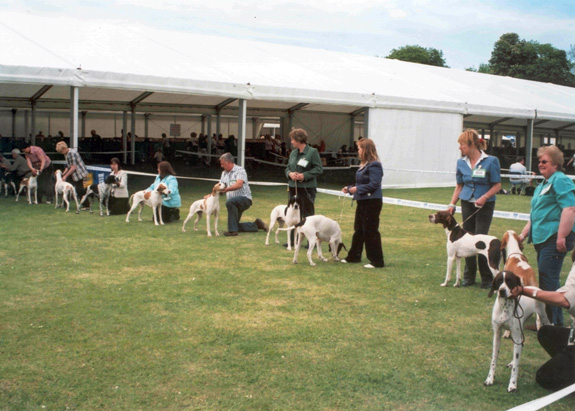
In 1994, the Crufts judges were even less impressed by the gundog breeds entry, and remember these are all winning dogs from qualifying shows: Labrador Retriever dogs - "The true Lab head is becoming increasingly rare...movement that was true was also sadly lacking"; Labrador bitches - "Regrettably I cannot understand why a few qualified at all"; Irish Setters - "I found quality in depth lacking and the movement was on the whole very bad"; Cocker Spaniels - "...it was disappointing to find...dogs which were upright in shoulder and had poor movement. This was particularly sad in view of the fact that they had to pass a hurdle before qualifying for Crufts"; Golden Retrievers - "I was surprised to find so many young dogs lacking in quality and of poor construction...I will never understand how they qualified. This indicates two serious factors, either there has been some very poor judging, or there have been some judges who do not know the conformation of the breed and have no idea of quality."
Of course there are plenty of judges' critiques full of praise for all breeds. But if there are doubts about the quality of the judges as assessors, can such praise withstand scrutiny? The sooner the Kennel Club introduces formal training for dog show judges who award challenge certificates, with examinations to confirm this training , the better for quality control at our dog shows and, more importantly, for quality assurance in our future pedigree stock.
I understand that in Japan, in order to judge one breed, the Shiba Inu, it is necessary to be a member of the breed chapter for five years, a judge's assistant for at least two years, a judge's trainee for at least three years, to attend the judge's course at least twice and pass an examination. Even then an indefinite further period has to be served as an Associate Judge before fully qualifying. Small wonder that the specimens of this breed that I see at shows seem to be a great credit to their breeders, their breed and to their country of origin.
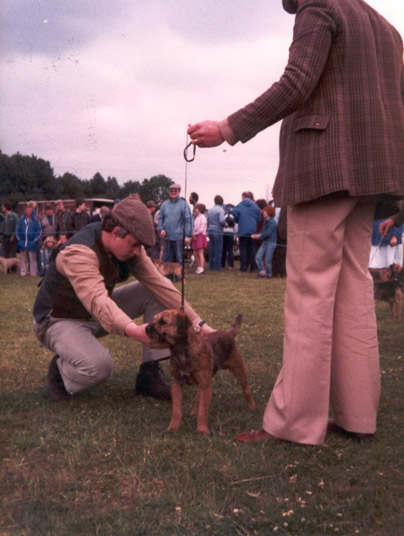
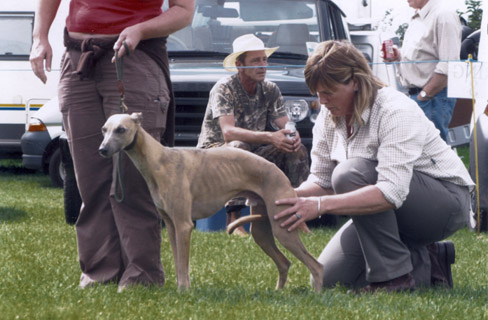
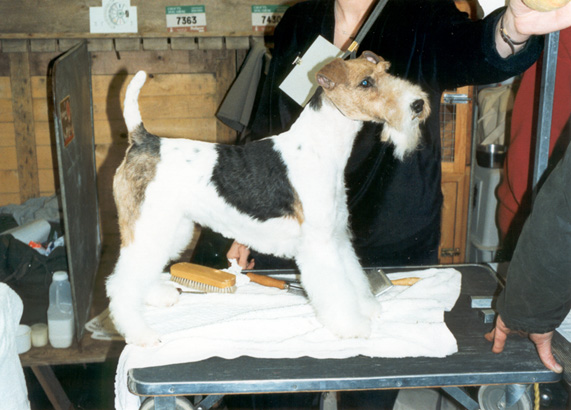
Dissatisfaction with the ability of dog show judges is not new, as these words illustrate: "The general public, those who take any interest in dogs, are confident that the actual judging for Best in Show may be a farce. They feel, in the first place, that the person appointed is quite often not qualified to make the decision..." No, these are not the words of an anti-dog-show journalist or a bitter exhibitor with an unplaced entry. They are the words of RH Smythe, a veterinary surgeon who bred, reared and exhibited dogs of almost every known breed, in his much-respected book "Judging Dogs". The fact that it was written twenty years ago gives it even more validity, for few would disagree that dog show judges were far better then.
As a counter to this, it could be argued that this is but one comment on the imprecise art of judging dogs on their appearance, made some time ago. But for years there has been sustained discontent over how judges at dog shows are appointed and whether they should be formally trained and pass examinations for such a task. There are formal qualifications for judges on offer, but the Kennel Club has so far declined to recognise them. Yet the Department of Education has! The Animal Care College in Ascot offers a Judging Diploma, formally listed as an approved vocational qualification under the 1992 Education Act. In the United States, there is a Senior Conformation Judges Association Education Institute which runs very comprehensive courses even for senior American Kennel Club judges. Our own Kennel Club heard over 30 complaints against judges approved by them in the last year. Seventeen of them alleged lack of knowledge or, worse, disregard of the written breed blueprint or standard.
Considerable concern was expressed in 1993 when a judge was approved by the Kennel Club as being authorised by them to judge every single breed for which KC challenge certificates were then on offer, i.e. 137 different breeds. A number of distinguished breed specialists have expressed worries over whether one person could, with the competence needed, judge across such a wide variety of size, shape, texture of coat, colour, head, gait and breed idiosyncrasies. How many Hound-Show judges would be happy to judge toy breeds? How many lurcher and terrier judges would feel competent to judge Bulldogs and Bloodhounds? Would a gundog field trial judge be approved to officiate at a sheepdog trial? This is not the way to induce confidence in dog show judges.
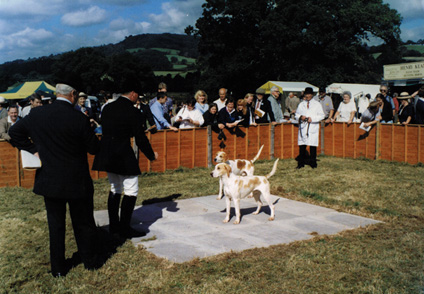
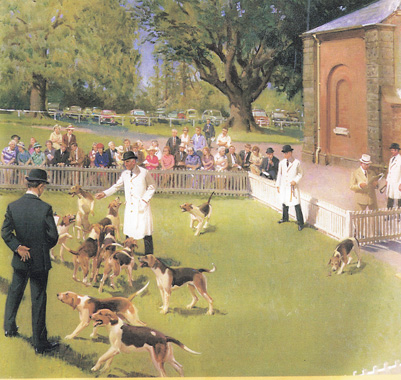
In the October 1994 issue of the Kennel Gazette, an executive of the Kennel Club, rather strangely, wrote: "Why do the adherents of our sport (sic) want to judge?...Perhaps those seeking these positions should examine their motives...But surely the whole show scene is basically dedicated to the improvement of dogs, the best stock for the future of breeds being identified by competent, adequately trained and selected judges. Is their motivation linked to the improvement of dogs? That is the question that must be asked." Surely that is a question the Kennel Club must ask itself! Do they not realise that they are in charge? What are their plans for producing "competent and adequately trained judges"? The Kennel Club approved 738 new judges last year, solely on recommendation. Is this really the best way to improve dogs and ensure that the best stock is identified for future breeding programmes?
It is abundantly clear from the critiques of the 1995 Crufts judges themselves that poor quality dogs are qualifying for that top event. It is equally clear that behind the glitz and glamour of Crufts itself lies a sham: unqualified judges pompously deliberating over unimpressive exhibits. How on earth can such a situation possibly contribute to the improvement of pedigree dogs? A Crufts winner can go on to sire 100 litters, perhaps over 600 pups. If that sire is an unworthy winner, wrongly rewarded by an ignorant over-rated judge, the public buying those pups will never know, just that their pups' father won at Crufts. The man in the street is being misled and television journalists are promoting that deceit.